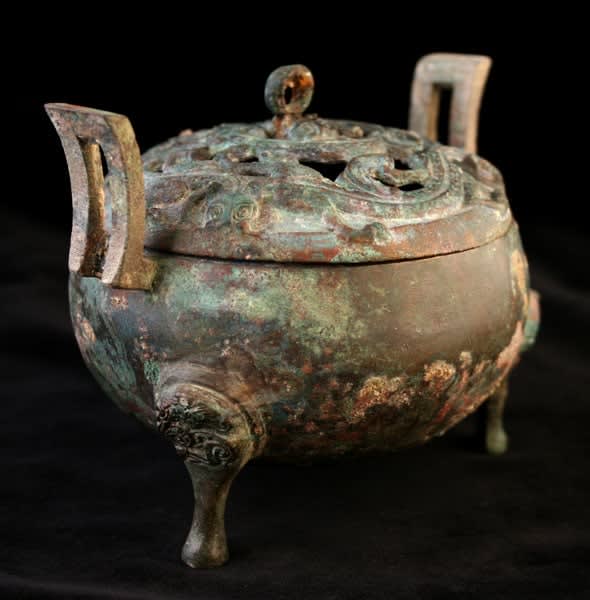Warring States Small Bronze Ding, 475 BCE - 221 BCE
Bronze
9.8 x 13.3 cm
3 7/8 x 5 1/4 in
3 7/8 x 5 1/4 in
CK.0057
Further images
Whereas before, war was characterized as a civilized contest between aristocratic armies, during the Warring States Period (475-221 B.C.), war evolved into the chaotic conflict we know it as today....
Whereas before, war was characterized as a civilized contest between aristocratic armies, during the Warring States Period (475-221 B.C.), war evolved into the chaotic conflict we know it as today. Kings and princes were replaced on the battlefield by infantries lead by military generals. Peasants were recruited to serve on the front lines. Warfare intensified, especially in terms of the duration of campaigns. New arms and armor were invented, including the halberd and crossbow. Chariots rode alongside archers outfitted in iron helmets and body armor. Defensive walls were erected in order to repel invaders. However, despite the turmoil of the times, the arts continued to thrive. Bronze casting was revolutionized by the introduction of the lost-wax technique, while the alterations of kiln structures enabled new firing techniques that resulted in fully developed glazes. Although this period was marked by almost constant upheaval, the Warring States also represents a golden age of Chinese culture and thought.
A ding is essentially a tripod vessel with two raised handles. Originally, the ding was utilized for cooking meats, hung over a fire by its handles. Later, the function of the ding would evolve from the preparation of foods to the presentation and serving of foods at certain rites and festivals. Dings with inscription were primarily used for offering sacrifices to the gods. The diminutive scale of this particular ding suggests that it must have been created for ritual, not practical, purposes. The funerary arts evolved over the ages in China to provide the deceased for all their potential needs in the afterlife. Presumably, this ding would have offered sustenance throughout eternity.
A ding is essentially a tripod vessel with two raised handles. Originally, the ding was utilized for cooking meats, hung over a fire by its handles. Later, the function of the ding would evolve from the preparation of foods to the presentation and serving of foods at certain rites and festivals. Dings with inscription were primarily used for offering sacrifices to the gods. The diminutive scale of this particular ding suggests that it must have been created for ritual, not practical, purposes. The funerary arts evolved over the ages in China to provide the deceased for all their potential needs in the afterlife. Presumably, this ding would have offered sustenance throughout eternity.











